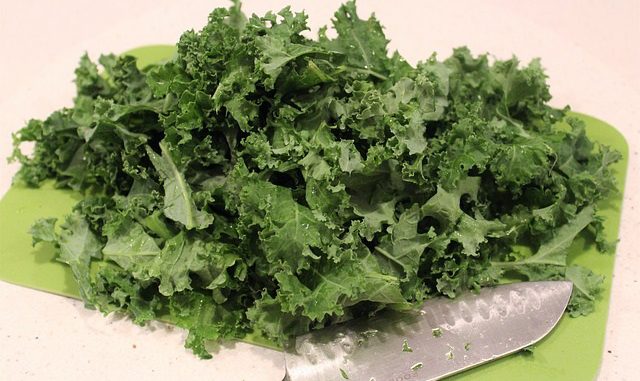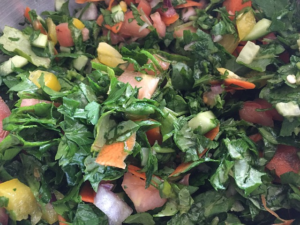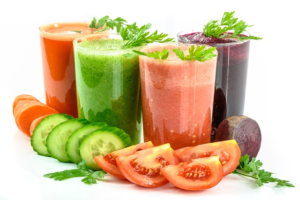
Kale Varieties Used For Nutritional Benefits
Kale or leaf cabbage plant has green or purple leaves and the center leaves do not form a head as with headed cabbage. Kale or leaf cabbage refers to certain vegetable cultivars Brassia Oleracea of the plant species and is considered to be closer to wild cabbage compared to most domesticated forms of cabbage.
This was one of the most common vegetables in Europe until the middle ages. Flat-leaf cabbages already existed along with curly-leafed varieties in Greece in the fourth century BC. The Romans referred to Sabellian kale as the ancestors of modern-day kale as we know it.
Some varieties can reach six or seven feet in height while other varieties are symmetrical and compact, perfect quality for adding to recipes.
The leaf colors range from dark green to light green, green to violate-green, to violate brown. One may differentiate between the different verities based on the size of the stems, low or intermediate length, or the color of the leaves and the different leaf types.
Russian kale was introduced to Canada and then to the United States in the 19 Century by Russian traders. During Worl War Two the dig for victory campaign encouraged the cultivation of kale in the UK. The vegetable was easy to grow and provided necessary nutrients for individuals living on rations at the time.
Usually, an annual plant grew from seed with a wide range of germination in temperatures and is hardy in cool or winter weather. One variety of rape kale can grow well into the winter called the ” hungry gap” after a period in winter agriculture had little else to be harvested. Jersey kale or kale cabbage Kia-lan is an extra-tall variety or Chinese kale is a cultivar used in Chines cuisine, however, the English refer to it as kale.

Health Benefits of Kale and Phytochemicals
Kale is a good source of zeaxanthin, carotenoids lutein an antioxidant that protects the heart, eye, skin health has been shown to prevent diabetes and cancer. Lutein is a xanthophyll and is one of 600 naturally occurring carotenoids. Lutein is synthesized only by plants and like other xanthophyll found in high quantities, for example, dark leafy vegetables, broccoli, kale, spinach, collard greens, and yellow carrots.
Cruciferous vegetables such as broccoli and kale contain glucosinolate compounds such as glucoraphanin which contributes to the formation of sulforaphane. The research concluded in preliminary studies showed sulforaphane is a powerful anti-cancer and antioxidant that stimulates natural detoxifying enzymes. Reduce the risk of prostate cancer and breast cancer by eating more of these cruciferous vegetables in your diet.
The best way to preserve the nutritional value is to avoid boiling when cooking as this decreases beneficial glucosinolate compounds, whereas steaming, stir-frying or microwaving does not result in a significate loss. Can also be eaten raw in salads and vegetable smoothies for gaining more nutritional benefits. Discard the stems, eating only the leaves.
The nutritional benefits of eating kale is a fantastic way to increase your calcium intake for good strong bones. One 100 gram serving of raw kale provides is only 49 calories and is very in vitamin K 20% or more of the daily value DV and is a rich source of manganese, vitamin B6, folate, vitamin C, vitamin A, vitamin E. Kale is a good source of 10% to 19% DV of pantothenic acid, copper, thiamin, riboflavin and several dietary minerals phosphorus, calcium, iron, potassium. Boiling this vegetable diminishes most of the nutritional value when cook except for vitamin K.
Contains very little fat, however, a large part of that is alpha linolenic acid ( omega 3 fatty acids) which protects your heart, high cholesterol levels, and high blood pressure.
Tips For Eating More Kale
- Eat kale once per day for nutritional benefit
- Eat raw or steamed vegetables to reduce loss of natural vitamins and minerals
- Protect your vision with cruciferous vegetables
- Kale chips are a great low-calorie snack packed with vitamin K
- Develop healthy glowing skin by eating dark green vegetables
- Create smoothies for a high antioxidant drink. Mix and match fruits and vegetables for a delicious combination.
- Reduce the risks of cancer by eating more of this superfood in your diet
Tender green leaves of this plant can make a healthy addition to any meal, particularly when combined with other intense flavored ingredients such as soy sauce, sesame seed salad dressing, red capsicum flakes, walnuts, dry roasted peanuts, and almonds or a vinaigrette dressing.
Kale Chips Recipe Healthy Substitute Snack
Flavored kale chips are now being sold in local stores and online. making homemade kale chips is a cinch and only requires a few ingredients and can be used as a substitute for eating regular chips.
Instructions
1.) Strip leaves off the stems by holding the end of the stem with one hand and stripping the leaves off one at a time.
2.) Tear each leaf into bite-size pieces approximately 2 x 2 inches.
3.) Fill a large bowl with water and add baking soda and dissolve. This is a natural cleaning solution for vegetables and fruit
4.) Add the kale to the water and baking soda to wash well.
5.) Rinse and dry the kale leaves in a clean kitchen towel
6.) Preheat the oven to 350 degrees.
7.) Add one tablespoon of olive oil to a large bowl with a pinch of sea salt or spray the kale leaves with a natural olive oil spray to finely coat the leaves. This will save on calories and you can control the salt.
8.) Add the dry kale leave to the oil and pinch of salt
9.) Spread the dry kale leaves on a cookie sheet.
10.) Place the cookie sheet in the oven 350 degrees for 15 minutes or until crisp.
Enjoy this natural healthy snack of kale chips. Try different seasonings for a unique combination of flavors such as powdered garlic, pepper flakes or garlic and onion powder flavor. Sprinkle on your favorite seasonings after cooking.
Eating Kale Raw Preserves Nutrients
Eating raw kale is not easily digestible for some individuals who like to eat it in salads. It may cause abdominal bloating and discomfort. Try steaming this delicious vegetable until tender to help reduce cholesterol levels. Studies show eating raw kale does retain more of its protective nutrients to help fight cancer. Smoothies are a great way to eat raw vegetables and fruits giving you the full benefit of anti-oxidants, vitamins, and minerals.
Out of all the vegetables, Kale is on top of the list for all its beneficial benefits for its compounds noted for its medicinal properties. Naturally enhancing your nutritional intake to prevent disabilities and diseases including heart disease, high blood pressure, and cancers. Kale is a superfood low in calories, packed with high levels of vitamins, minerals, and anti-oxidants like act to protect cells from oxidative damage from free radicals believed to cause cancer and aging.
Substances that are antioxidants have very important functions in the body. This includes flavonoids found in large amounts in kale called kaempferol and quercitin. Studies show these compounds have anti-inflammatory, cardioprotective and blood pressure lowering benefits.
Conclusion? Kale is the king of all vegetables and should be eaten at least once per day to get the full health benefits. Kale is an excellent source of Vitamin C resulting is collagen synthesis the most important structural protein in the body. It’s water-soluble anti-oxidant servers many viral functions in the body. Kale is much higher in vitamin C compared to other vegetables containing 4.5 times more than spinach.

Kale Packed With Minerals & vitamins
The nutrients in kale are best when eaten in the raw or lightly steamed form, can be easily blended into a delicious smoothie. Increase energy and boost immunity with this powerful drink. These recipes are a cinch to make and easily digestible due to the blending process. As always wash fruits and vegetables well before preparation.
Delicious Kale Supreme Smoothie
Smoothies can be made in a blender or juicer by combining fruits and vegetables to create different flavors. Add more kale to your diet and reap the full benefits of this amazing vegetable packed with vital minerals you need to stay healthy.
Ingredients
1 whole kale leaf washed
1 apple washed seeds removed cut into small pieces for blending
1/4 cup blueberries
12 ounces of pure water.
4 ice cubes ( Optional)
Instructions
Add the water to a blender
Add all the fruit and kale leaf
Blend until all the ingredients are liquefied.
Pour the liquid into a glass and enjoy!
Whether your juicing, baking or incorporating kale into a new dish, benefit from all compounds found in kale.
Getting more kale into your daily diet can be done by using it in favorite recipes, salads, smoothies, kale chips for healthy snacking or just eating it raw in its best for maximum nutritional impact. One cup only has 33 calories, zero saturated fat 0.1 g, polyunsaturated fat 0.2 g, monounsaturated fat 0 g, and high in potassium 329 mg making this superfood.
If you have not tried kale yet it may be the right time. This superfood is packed to the max with powerful anti-oxidants, vitamins, and minerals the fight cancer, heart disease, and other diseases. Give it a try!
Resources
All Recipes– Find great tasting easy to make kale recipes including Garlic and kale, spinach and kale smoothie, chili roasted kale and kale soup. Much more…
Book Club
Kale- The Complete Guide To The Most Powerful Superfood ( Superfoods For Life) Book by Stephanie Pederson Book sold online and books stores near you.
50 Shades of Kale- 50 Satisfying recipes that are bound to please. Book by Ramsey Drew, MD Jenifer Iseloh sold on amazon
Weight Loss Diet Plans– A complete source of fitness and weight loss strategies designed to help you lose weight, look and feel your best. Tour the whole website and be sure to sign up for a free gift of Garcinia weight loss supplement while supplies last.
Share this post with friends. Join us on Facebook for more insight and information.
Cheers!
Patricia Lynn
Images Courtesy of Pixels, WDStudio at Pixbay.com